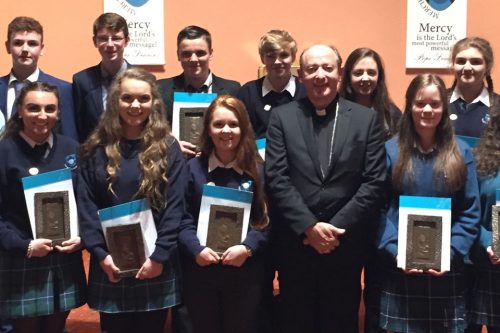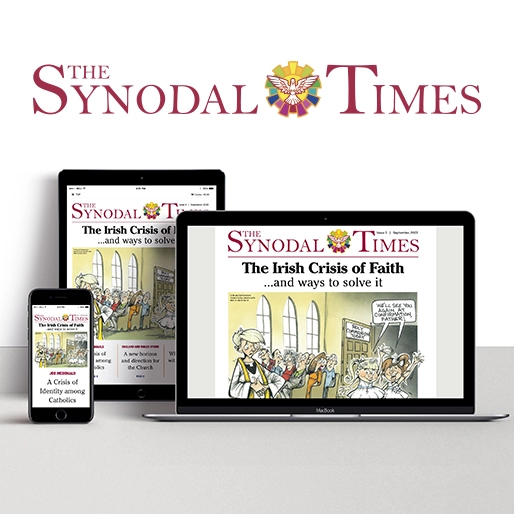The Diocese of Waterford and Lismore comprises 144,027 Catholics and encompasses Waterford city and County Waterford along with parts of counties Tipperary and Cork. The incumbent bishop is The Most Reverend Alphonsus Cullinan, who has overseen since 2015.
Bishop Cullinan engaged with and received contributions from four diverse cultural communities within the diocese.
The recurring themes that emerged from the synodal gatherings in the Diocese of Waterford and Lismore were centred around the following:
Young people
The theme of young people came up strongly. People felt that a special Mass with children involved in the readings and the singing would help to keep them connected to their faith. It was also mentioned that the Mass should be ‘modernised’ for them. Another element of keeping young people involved was the whole idea of the JPII awards that have been successful in the Diocese.
Study groups with faith formation based on the Bible and Papal Encyclicals that contain rich spiritual nourishment must be on offer. Alpha for young people is also a good way for them to learn more about their faith. Pilgrimages with young people to shrines was another way of connecting them to Church and giving them an experience of faith in action e.g. Lourdes. The older generation were worried that if the children are not going to Church now, how it will survive in the future.
With regard to young peoples’ perception of the Church, better communication was seen as a vital element of connection. They asked that the Church be more welcoming of the LGBTQ+ community. One young person said the Church was old fashioned and therefore, they did not feel welcome in Church. Another said that for older teens, the Church doesn’t engage – once Confirmation is over, there is no other forum in which they can participate.”
It was also felt that the age for Confirmation should be raised to late teens to allow them be more connected and sure of what they were receiving through the Sacrament.
Some people expressed an openness to the idea that the Sacraments would be taught through a ’Sunday School’ model in parishes with a Catechist, rather than going through the current school structure. Students said that the schools were doing the work of the Church particularly in relation to growing and upholding values like respect, dignity, fairness, justice issues etc. When asked why they didn’t attend Mass, they referred back to the Church history of child sexual abuse, linking it to the power that the Church had.
The Church as a beacon of hope
Submissions requested the Church to become more involved in helping people who are trying to turn their life around – ex-criminals, addicts, alcoholics etc. Some felt lonely in Church and felt like they were on a ‘losing team’. An enhanced engagement of Altar servers is encouraged, as we seem to have lost this ministry, with some parishes seeing it as a difficulty due to safeguarding paperwork etc. It was suggested that each Parish Pastoral Council would also have a ‘teen’ version of a Pastoral Council in which the youth would feed back their cares, concerns and ideas to the adult group.
Faith formation
Faith formation was a big discussion point throughout all the gatherings. It was generally felt that religion was visible, but there was not exactly an understanding of it. Small faith sharing groups would be beneficial in parishes – faith develops as you share. Catholic parents don’t always have the tools to pass on the faith to their children. There was a definite hunger among the gatherings that avenues of faith formation should be further developed, with a particular focus at parish level.
Vision for the Church
This theme was discussed in great detail. Hope, prayer and the commandments need to be evident in the regular work and mission of the Church. Decision making to adopt a functioning consultative model is important. A vision of the Church in action right now is the community in which you live. People are there for each other when needed.
People should not be afraid or embarrassed by their faith – and people should SMILE! The future vision for the Church should be about the Love of God coming to the fore more, rather than rules and regulations. Again, gathering in small faith groups was seen as a way forward with faith connection.
Many felt that, as children, they frequented the Church by obligation, but now they feel they can be part of it if the connection is good. Each person’s experience of Church can be different of course, depending on their personal reality; it can be a journey together for some, and for some it can be a very lonely experience.
Reversions to the Church do occur and they are profound. Some felt we are currently on a broken journey and perhaps we have lost our way. Many people do not fit into our narrow definition of Church. Churches will be closed, and then the people will desperately seek the Church. It was suggested that a ‘Sunday of Welcome’ and visitation teams be set up in parishes, and formally invite people to be part of their faith community.
Church as a voice for the voiceless
Unpaid volunteers are currently the ‘workforce’ for the parishes. Collaboration between priests and people is only now beginning in Ireland. Some parishes have become ‘independent republics’. Many see synodality in the GAA, and other organisations but not necessarily in Church, unfortunately.
Our journey in the Church together
Journeying together in the Church was another big discussion point. The vast majority of those who gathered for the faith conversations were of the midlife to senior generations. Many of them were brought to the Church by their parents and never questioned it in any way. They were part of ‘truly Catholic’ families and schools. Several stated that while they still treasure their faith, their children do not now attend Mass. Some added that their children and grandchildren are fine, loving and generous people, always ready to be of service to anyone in need, but are just not connected to the Church. One particular person shared the deep loneliness of going to Sunday Mass alone, and leaving after it, without ever a word or even a smile from anyone. Also, this person knows nothing about online courses or other initiatives of the local parishes in the Diocese.
Gender equality in the Church
Gender Equality as an issue in the Church was very visible throughout the conversations. Women were considered to be powerhouses of the organisation but undervalued in their role within the Church.
Women need their voices to be heard and listened to with real and immediate effect. It was asked that women be allowed to be priests and deacons in the future. Inclusivity is very important for the Church organisation moving forward if it is to survive. True support and an apology should be offered to all women who have suffered in any way through the direct, or indirect actions and/or neglect of the Church. Renewal comes through healing.”
The continuing shortage of priests
The age profile/vocations was another topic that was evident among the people gathered. It was evident in those who gathered for the conversations, but it was also a topic of conversation as people spoke about the age profile of the clergy and the congregations that attended the various different parish liturgies.
Who will replace those who are getting on in years? It is a big worry for the future of the Church. Priests should be allowed to marry if they wish, therefore offering a pathway to more who may desire to join the Priesthood. It was felt that each community should pray for and encourage vocations to the Priesthood. Deacons were mentioned as being an important vocation to the parishes in these changing times.
Discordant views
A view emerged among some people, that the Church has not learnt any lessons from the scandals of recent years and cover up was still thought to be an issue. It was stated that Satan has done damage to people, and to the Church itself, through the tragic reality of child abuse. The post covid fall off in Church attendance is now very visible. A formal financial report should be published appropriately at parish level.
What might the Holy Spirit be saying?
Prayer was mentioned as being the one thing that the Church can rely on to keep us focused and connected. Without God at the centre of everything we do, we have nothing. The hierarchical Church must now listen, and, more importantly, act on what has been said during these faith conversations. Each person’s input was a valued and respected contribution. People were free to speak out boldly and honestly and that was so important. Their input must be seen as essential to conversations that will take place in the future. The willingness of those who gathered to share their joys, sorrows, worries, anxieties and general openness about their love of Church and faith was apparent. They were there because they cared. The themes in bold were the common themes that came through the conversations, with many having a distinct repetition at each conversation.
The full report from the Diocese of Waterford and Lismore is available here.



